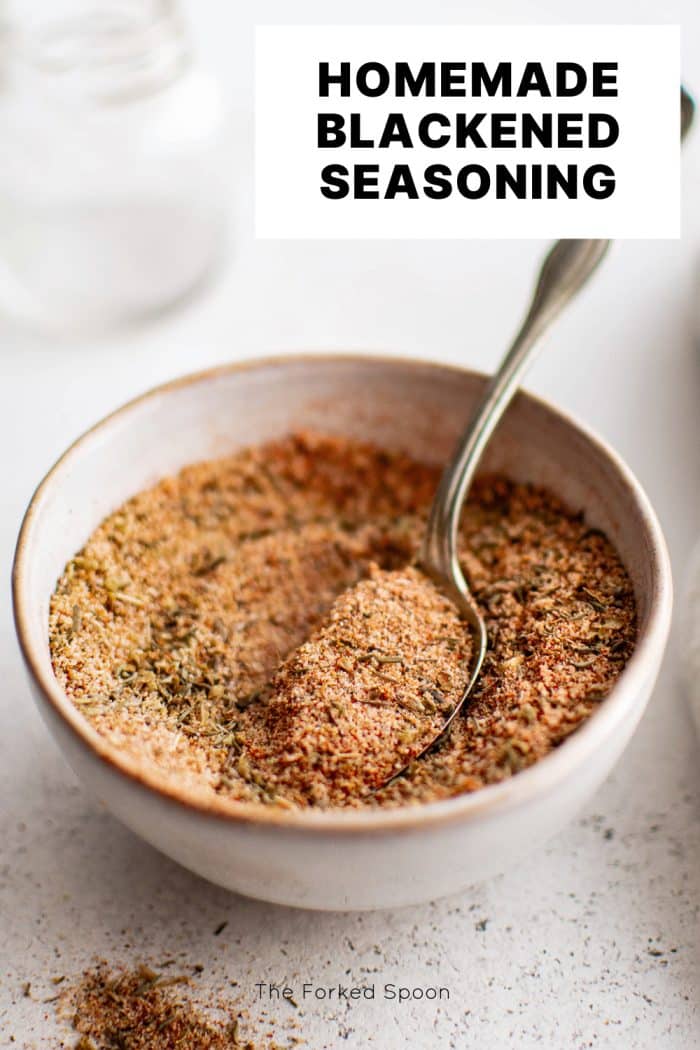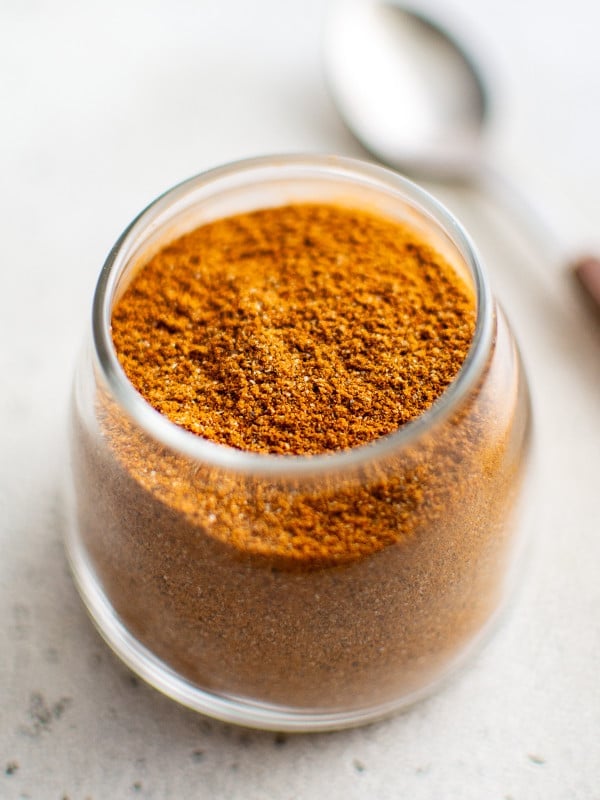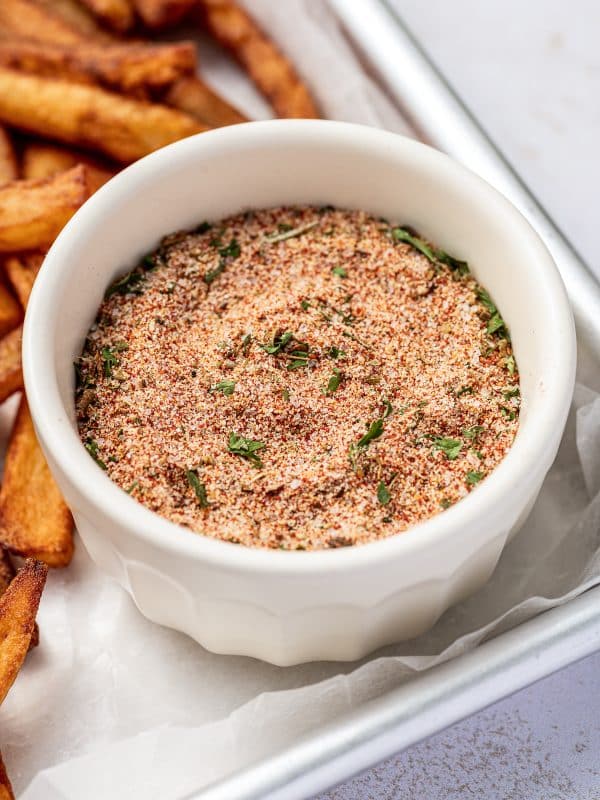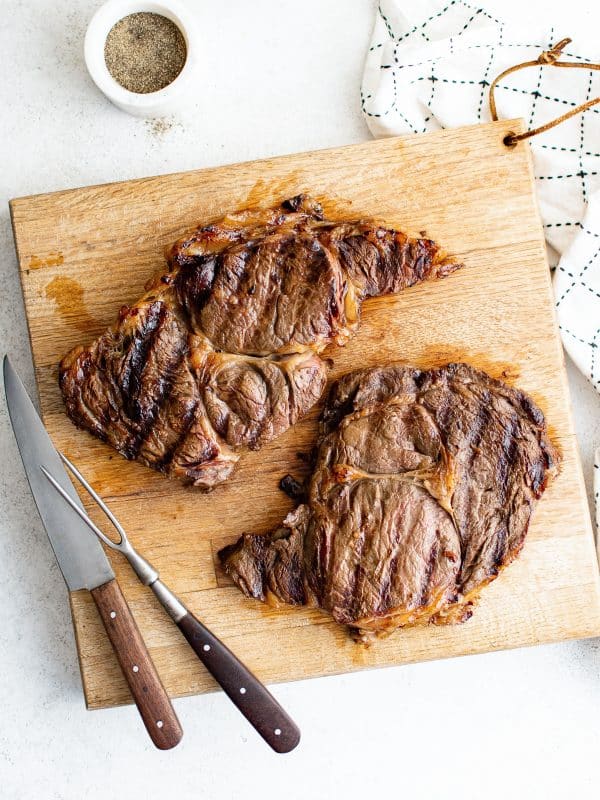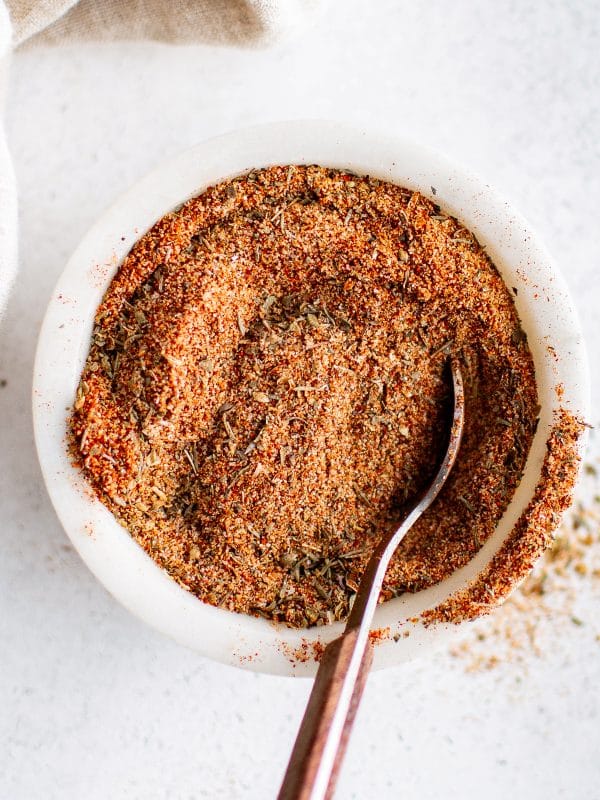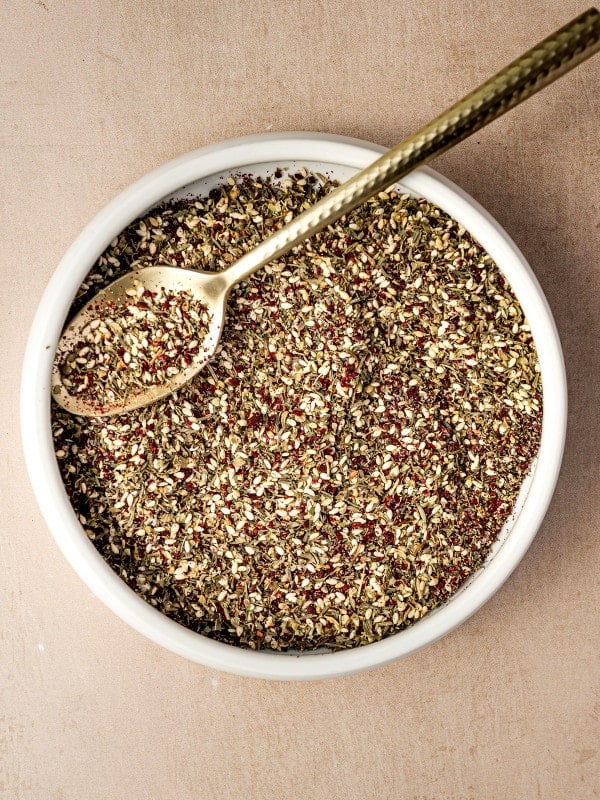This post may contain affiliate links. See my disclosure policy.
Homemade Blackening Seasoning (aka Blackened Seasoning) is an instant way to add bold, smoky, and zesty Louisiana flavor to just about everything. It takes just 5 minutes to make using everyday herbs and spices you probably have already. Use it to make favorites like blackened shrimp and blackened chicken.
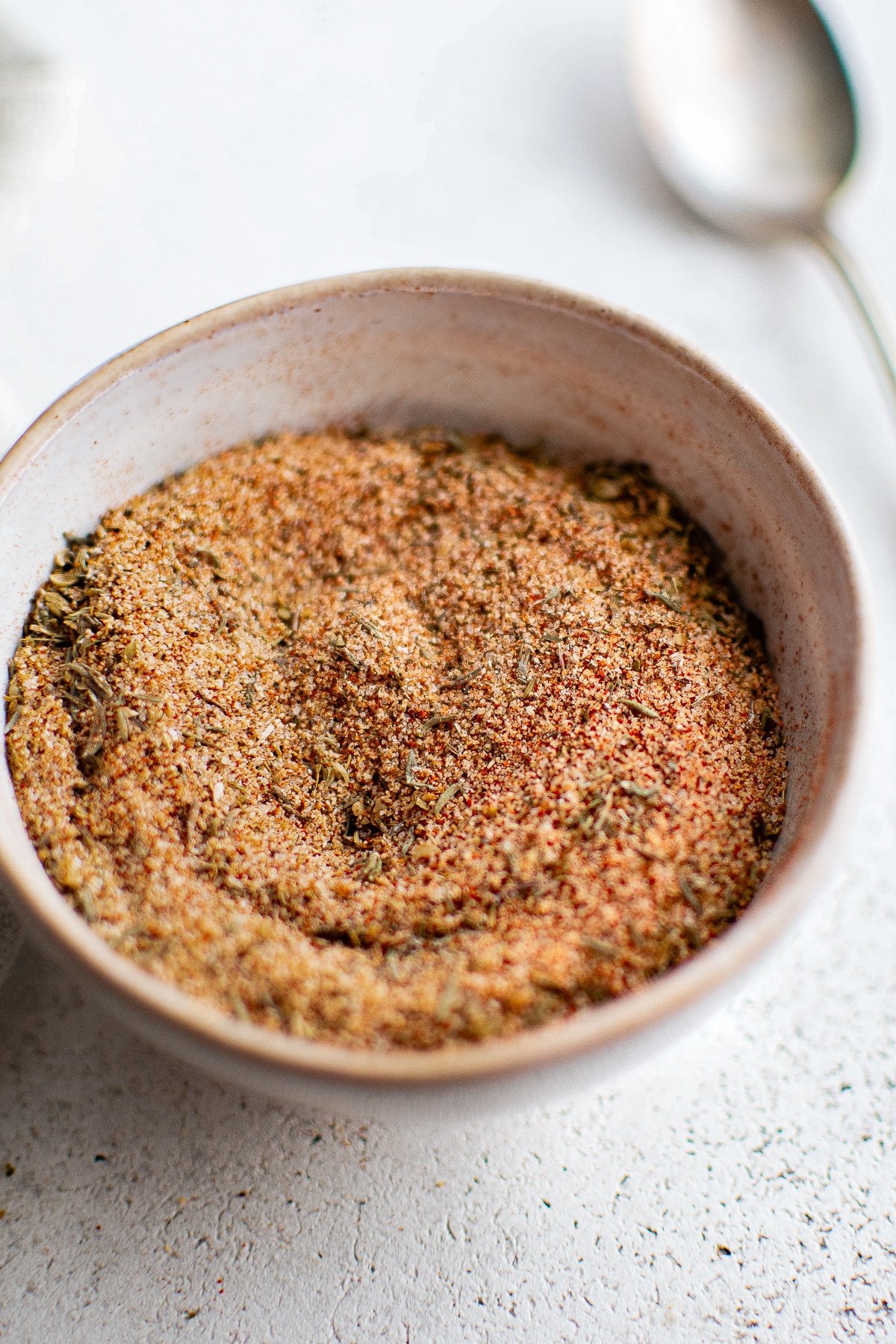
Blackened seasoning (aka, blackening seasoning) is a smokey, aromatic, and peppery spice blend that adds warm and complex flavor to everything from roasted vegetables and baked chicken breasts, to pan-seared salmon and even grilled steak. A cross between Cajun and Creole seasoning, if you love the bold flavor of classic Louisiana cuisine, you’re guaranteed to love blackened seasoning as well.
This homemade version is easy to mix together with simple pantry spices, dried herbs, and paprika and can be adjusted to suit your own heat preference.
Table of Contents
What Does Blackening Mean?
“Blackening” is a high-heat cooking technique that was perfected and popularized by Chef Paul Prudhomme in the 1980s, when he introduced blackened redfish at his New Orleans restaurant, K-Paul’s Louisiana Kitchen. It refers to the process of coating protein (typically fish) in melted butter, then dredging it in blackened seasoning mix, and cooking it in a blazing-hot cast iron skillet (source). The high heat forms a crispy, charred, spice-infused exterior that’s rich, smoky, savory, and packed with flavor. The idea was to replicate the flavor of open-fire grilling in a commercial kitchen.
What is in Blackened Seasoning?
Blackened seasoning is made with a mixture of simple dried herbs and spices. Classic blends tend to be quite spicy, but this version is more mild with a smoky, savory, and herb-focused flavor profile. Feel free to add cayenne pepper for heat. Start with ½ teaspoon and add more to taste. Here’s what you’ll need to make it:
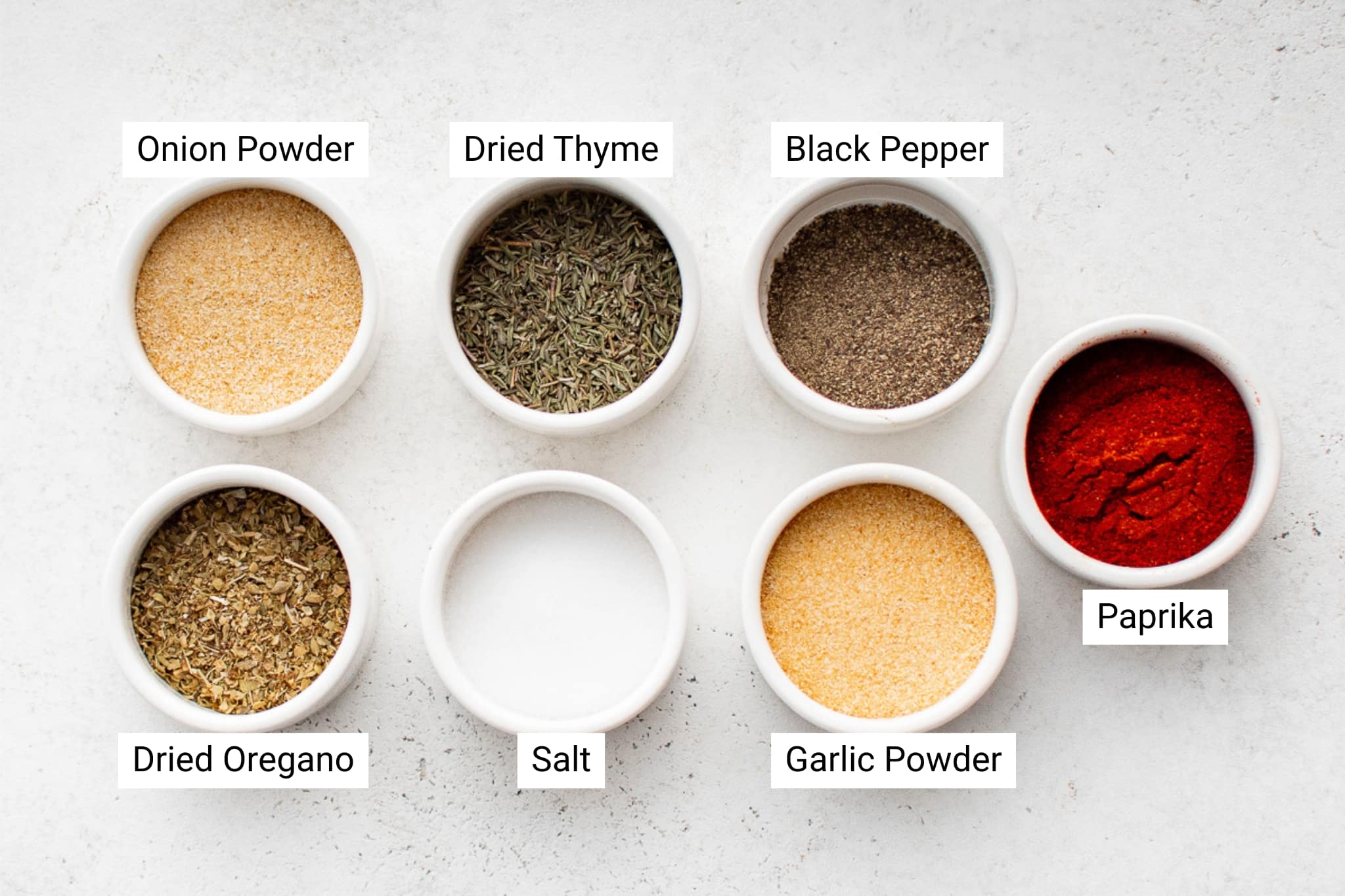
- Paprika: You can use smoked or sweet paprika, or a mix of each
- Garlic Powder
- Onion Powder
- Dried Oregano
- Dried Thyme
- Salt: For a low-sodium or salt-free version, simply omit the salt
- Black Pepper
- Cayenne Pepper (optional): Start with ½ teaspoon and add more to taste
Find the printable recipe with measurements in the recipe card below.
How to Make It
Start by gathering your dried herbs and spices, checking for freshness. If using whole-leaf herbs, crush them with a mortar and pestle or briefly pulse in a spice grinder. Then, combine all of the ingredients. Place the paprika, onion powder, garlic powder, dried thyme and oregano, salt, and black pepper in a small bowl and whisk to combine.
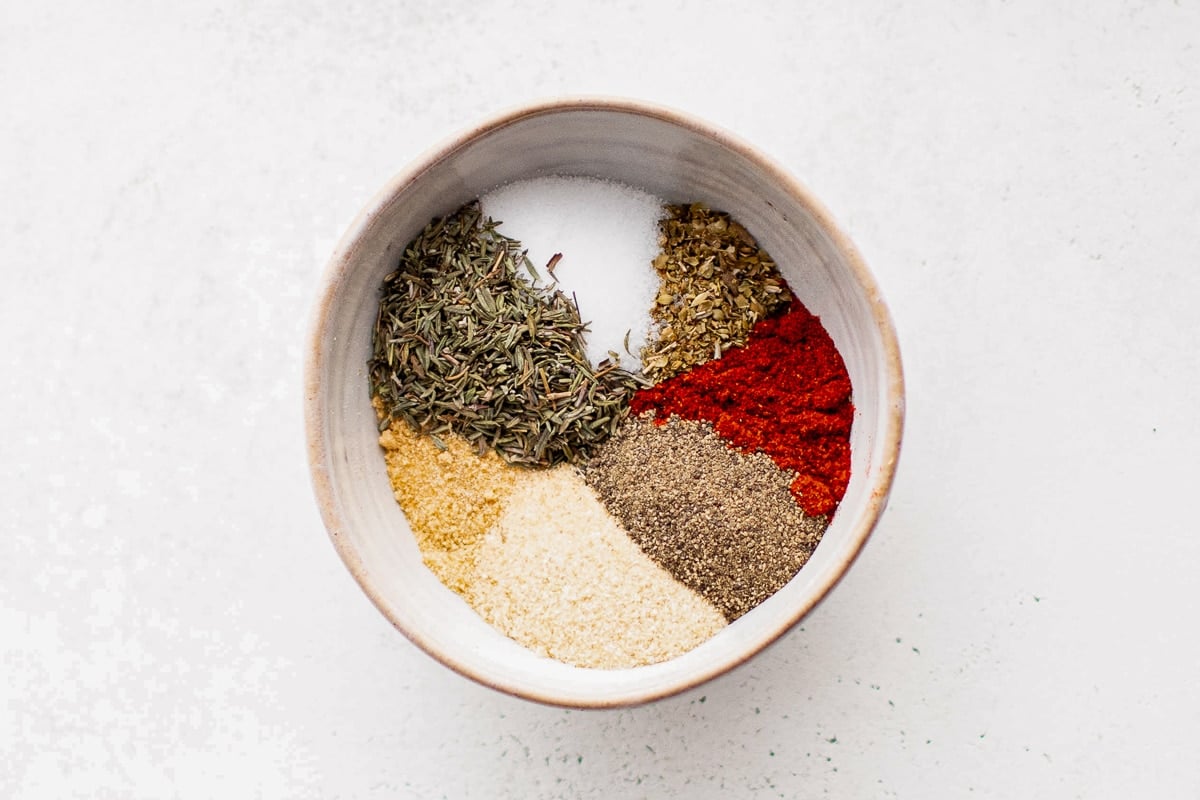
Storage Information
Blackened seasoning begins to lose its freshness after about 6 months. Starting with fresh spices will result in a longer-lasting seasoning blend with the most potent flavor. Store in a sealed, airtight container like a small mason jar. It’s also recommended to place your sealed seasoning in a cool, dark place to prevent the ingredients from drying out.
Cajun Versus Creole Versus Blackened Seasoning
Cajun, Creole, and Blackening seasoning are incredibly similar, but a few subtle differences set them apart.
- Cajun Seasoning is usually spicier and more rustic, with a focus on heat from cayenne pepper. Use Cajun seasoning when you want more heat.
- Creole Seasoning is herby and complex, often including ingredients like dried basil, celery seed, or parsley. Unlike blackened seasoning, Creole seasoning is often used to season an entire dish like étouffée or jambalaya. It’s perfect for tomato-based dishes and stews, or proteins that benefit from mild and balanced flavor.
- Blackened Seasoning is smoky and intense, and made specifically for high-heat cast iron cooking. Blackening is less about the seasoning, and more about the cooking technique itself.
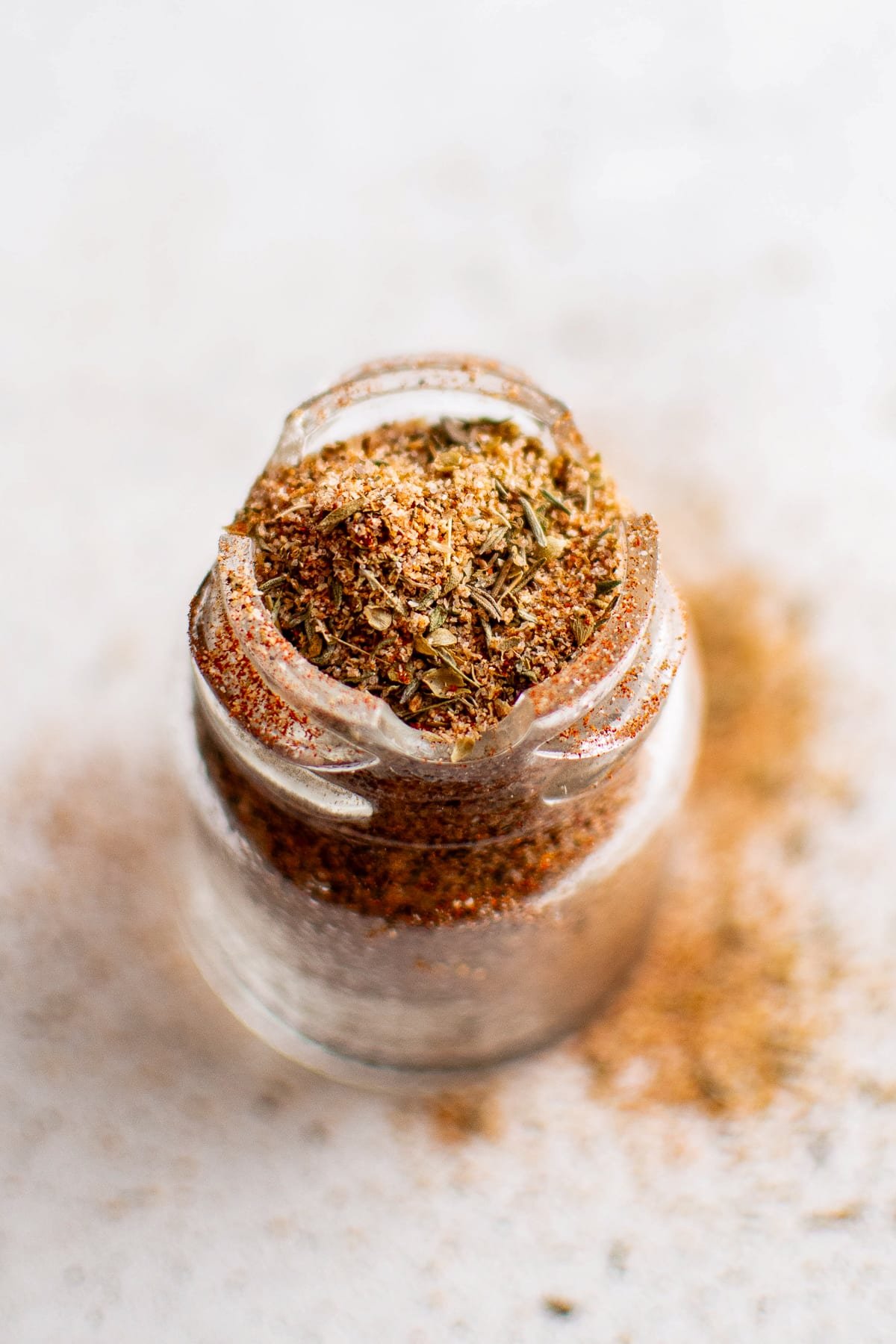
Jessica’s Pro Tip
How to Use Blackened Seasoning
Blackened seasoning isn’t just for fish. It’s a versatile seasoning blend that adds smoky, savory flavor to a wide variety of dishes. Use it as a dry rub, mix it into marinades, or stir it into your favorite sauces and dips.
To use blackened seasoning in everyday cooking:
Pat the fish, shrimp, chicken, or other protein dry before coating in melted butter (or oil). Generously apply blackened seasoning to the entire surface of the meat, pressing it to the surface, for a thick coating. Then sear in hot cast iron skillet until a dark, blackened crust forms. Chef Paul Prudhomme was known for basting his blackened redfish with butter as it seared and cooked.
- Fish: Use it to make blackened salmon, catfish, mahi mahi, or tilapia. Firm white fish fillets work best.
- Shrimp: Toss peeled shrimp in butter and blackened seasoning then sauté for bold flavor. A popular addition to shrimp tacos, pasta, and salad.
- Chicken: Apply the same method to thinly sliced chicken breasts, thighs, or drumsticks. Because chicken takes longer to cook than fish or shrimp, sear over high heat first before transferring to the oven to finish cooking. I often use it to make my blackened chicken Alfredo (a family favorite!)
- Vegetables: Try sprinkling it over garlic roasted potatoes, roasted zucchini, or Air Fryer potato wedges for a punch of flavor.
More Homemade Spice Blends
If you make this blackening seasoning recipe, I’d love to hear how it turned out in the comment section below! Your review will help other readers in the community. And if you’re hungry for more delicious food inspiration and exclusive content, join my free newsletter here.
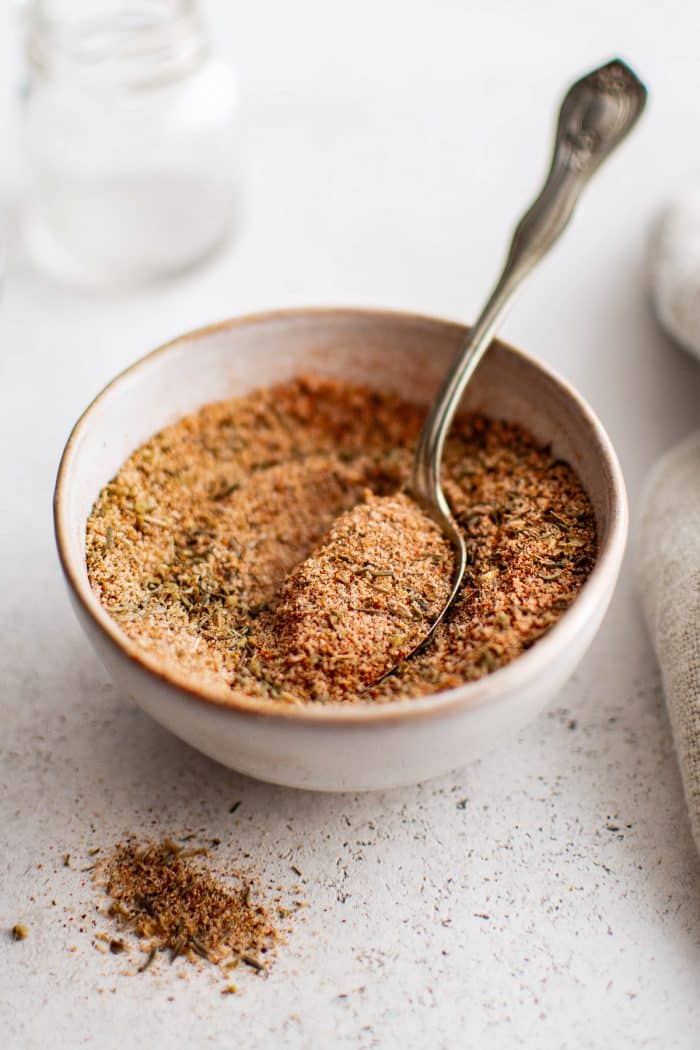
Blackened Seasoning Recipe
Ingredients
- 1 tablespoon smoked paprika, see notes
- 1 tablespoon onion powder
- 1 tablespoon garlic powder
- 2 teaspoons dried oregano
- 2 teaspoons dried thyme
- 1-2 teaspoons salt, more or less to taste
- 1 teaspoon freshly ground black pepper
- ½-1 teaspoon cayenne pepper, optional
Instructions
- Combine all of the ingredients in a small bowl and stir until evenly mixed. Adjust the salt and heat, to taste. Transfer to sealed, airtight jars or containers for up to 6 months.
Notes
- Paprika: There are three main types of paprika. Sweet Paprika (aka Regular or Hungarian-style Paprika), Hot paprika, and Smoked Paprika (aka Spanish Paprika). For the signature smoky flavor common in blackened seasoning, use Smoked Paprika whenever possible. Sweet paprika (or a combination of the two) can be used as a substitute.
- Salt: For a low-sodium or salt-free version, simply omit the salt.
- Cayenne Pepper (optional): Start with ½ teaspoon and add more to taste.
Nutrition
Nutrition information is automatically calculated, so should only be used as an approximation.
